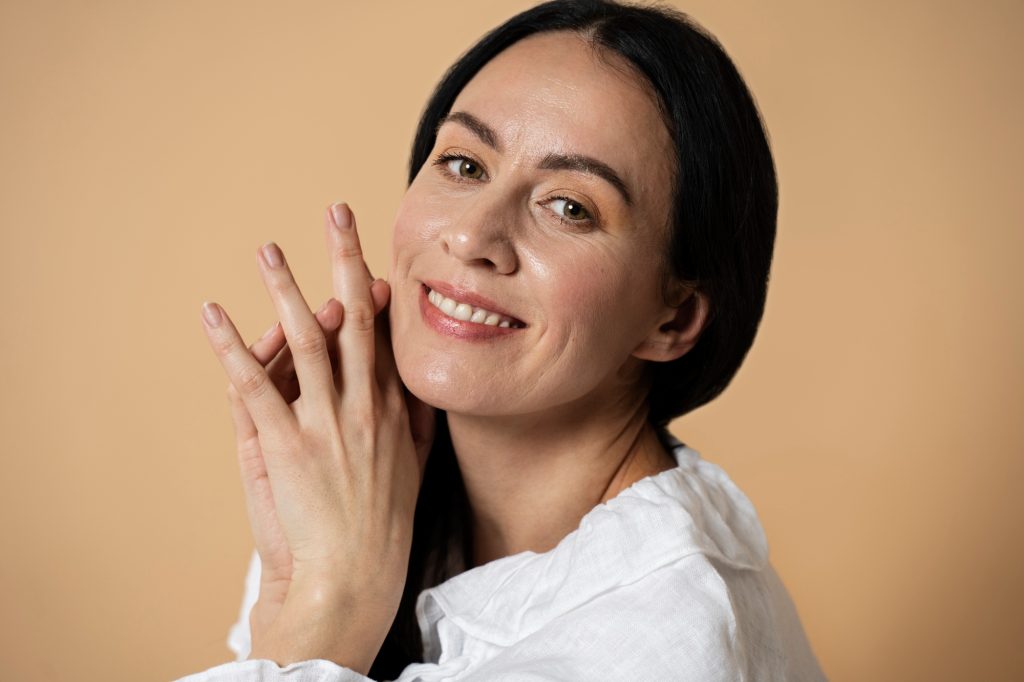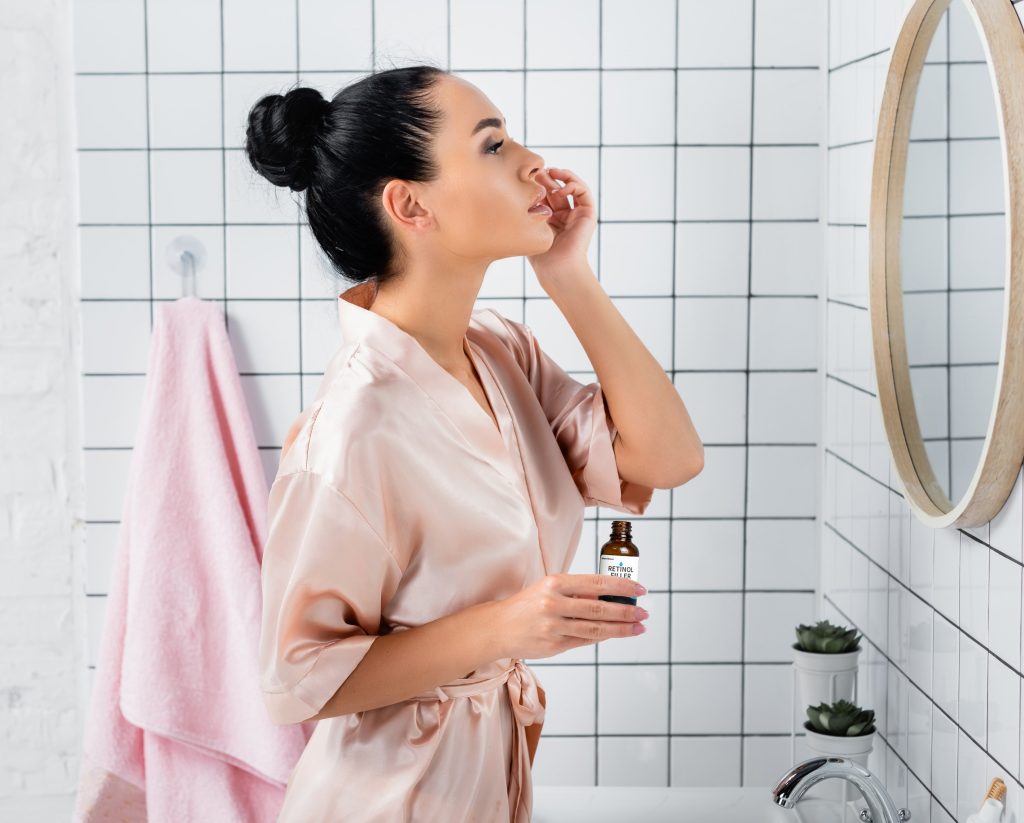Discover effective methods for firming and tightening your skin to say goodbye to sagging jowls.
Say Goodbye to Sagging Jowls: Effective Methods for Firming and Tightening Your Skin
Are you tired of looking in the mirror and seeing those pesky jowls staring back at you? Well, fret no more! In this article, we will explore the ins and outs of sagging jowls and discuss some effective methods for firming and tightening your skin. So, get ready to say goodbye to those saggy jowls and hello to a more youthful appearance!

Understanding Jowls: What You Need to Know
Exploring the Anatomy of Jowls
Before we dive into the magical world of jowl-firming methods, let’s take a closer look at what jowls actually are. Jowls are those pesky sagging areas of skin that hang down beneath your jawline, making you look like a pouty bulldog. Cute on the dog, not so cute on you!
Our faces are made up of various muscles and tissues that support the skin. Unfortunately, as we age, these muscles and tissues start to weaken, causing the skin to sag and form jowls. It’s like a cruel magic trick; one day you wake up and boom – jowls for days!
But what exactly happens beneath the surface that leads to the formation of jowls? Let’s go on an anatomical journey to find out.
Beneath the skin, there are several key components that contribute to the formation of jowls. The platysma muscle, which extends from the chest to the face, plays a significant role. As we age, the platysma muscle weakens and loses its tone, allowing the skin to droop and create those unwanted jowls.
Additionally, the loss of collagen and elastin fibers in the skin also contributes to jowl formation. Collagen is responsible for maintaining the skin’s firmness and elasticity, while elastin provides the skin with its ability to snap back into place. As these essential proteins diminish over time, the skin becomes less resilient and more prone to sagging, resulting in the dreaded jowls.
The Factors Behind Jowl Formation
So, what exactly causes jowls to form? Well, there are several factors at play here. Genetics, the aging process, and even lifestyle choices can contribute to the formation of these unwanted facial features.
If your parents or grandparents had jowls, you may be genetically predisposed to developing them too. Ah, the joys of genetics – they never fail to surprise us! However, it’s important to note that while genetics can influence jowl formation, they are not the sole determining factor. Lifestyle choices and environmental factors also play a significant role.
As we age, our skin loses its elasticity, and the muscles and tissues in our face start to weaken. This combo, along with the pull of gravity, can cause the skin to sag and create those dreaded jowls. It’s like our own personal gravity experiment happening right on our faces!
But what lifestyle choices can contribute to the formation of jowls? Well, smoking is one notorious culprit. Smoking not only damages collagen and elastin fibers in the skin but also reduces blood flow and oxygen levels, further accelerating the aging process. So, if you’re a smoker, you might want to reconsider lighting up to keep those jowls at bay.
Another lifestyle factor that can contribute to jowl formation is sun exposure. Overexposure to the sun’s harmful UV rays can break down collagen and elastin fibers, leading to premature aging and sagging skin. So, don’t forget to slather on that sunscreen and wear a wide-brimmed hat to protect your face from the sun’s damaging effects.
While we can’t completely stop the aging process or change our genetic makeup, there are steps we can take to minimize the appearance of jowls. From facial exercises to skincare routines and non-surgical treatments, there are a plethora of options available to help combat those sagging jowls and restore a more youthful appearance.
So, the next time you catch a glimpse of those pesky jowls in the mirror, remember that you’re not alone in this battle. Understanding the anatomy of jowls and the factors that contribute to their formation is the first step towards finding effective solutions and regaining your confidence.
Combatting Jowls: Tips for Prevention and Treatment
Lifestyle Habits to Prevent Jowls
They say prevention is better than cure, and the same holds true for jowls. So, let’s discuss some lifestyle habits you can adopt to prevent those saggy skin pockets from forming in the first place.
Firstly, make sure you are eating a well-balanced diet. Include foods rich in antioxidants, vitamins, and minerals to help keep your skin healthy and firm. Think berries, leafy greens, and lean proteins – your jowls will thank you!
Additionally, staying hydrated is crucial for maintaining the elasticity of your skin. Drinking an adequate amount of water each day helps to plump up your skin cells, reducing the likelihood of jowls forming. So, keep a water bottle handy and sip your way to jowl prevention!
Secondly, don’t forget to protect your skin from the sun. UV rays can damage collagen and elastin, the proteins responsible for maintaining skin elasticity. So, slather on that sunscreen and say no to premature jowl formation!
Moreover, incorporating regular exercise into your routine can also help prevent jowls. Exercise increases blood circulation, which promotes the delivery of oxygen and nutrients to your skin cells. This nourishment helps maintain the firmness and tightness of your skin, keeping those jowls at bay.
Effective Non-Surgical Methods for Treating Jowls
Alright, prevention is all well and good, but what if you already have jowls? Fear not, there are plenty of non-surgical methods that can help firm and tighten your sagging skin.
One option is facial exercises. Just like hitting the gym tones your muscles, specific facial exercises can help strengthen the underlying muscles in your face, reducing the appearance of jowls. From puckering your lips to performing jawline stretches, these exercises may seem silly, but they can work wonders for your jowls. Just be prepared for some funny looks from anyone who happens to catch you in the act!
Another popular non-surgical treatment is radiofrequency therapy. This magical technique uses heat energy to stimulate collagen production, giving your skin a more toned and youthful look. The heat from the radiofrequency waves penetrates deep into the layers of your skin, promoting the remodeling of collagen fibers. You’ll be amazed at the difference a little heat can make!
Moreover, if you prefer a non-invasive approach, there are various skincare products available that target jowls. Look for creams and serums that contain ingredients like retinol, hyaluronic acid, and peptides. These ingredients work together to boost collagen production, improve skin elasticity, and reduce the appearance of jowls over time. So, add these products to your skincare routine and watch your jowls gradually fade away.
Furthermore, facial massages can also aid in treating jowls. Massaging your face with upward strokes helps stimulate blood flow and lymphatic drainage, which can reduce water retention and puffiness. Incorporating facial massage techniques into your daily skincare routine can contribute to a firmer and more lifted appearance.
In conclusion, preventing and treating jowls requires a combination of healthy lifestyle habits and effective non-surgical methods. By adopting a nutritious diet, protecting your skin from the sun, and exploring non-invasive treatments, you can combat jowls and maintain a youthful, firm, and sculpted jawline.
Considering Surgical Options for Sagging Jowls
Is Surgery the Right Choice for You?
If non-surgical methods aren’t giving you the results you desire, or if your jowls are particularly severe, you may want to consider surgical options. But before you run to the nearest plastic surgeon, let’s weigh the pros and cons.
Surgery can provide more dramatic and long-lasting results compared to non-surgical treatments. However, it does come with its fair share of risks and downtime. So, be sure to consult with a trusted professional to determine if surgery is the right choice for you.
When considering surgery, it’s essential to understand the potential benefits and drawbacks. On the positive side, surgical procedures can effectively tighten sagging jowls, giving you a more youthful and rejuvenated appearance. The results can be truly transformative, boosting your self-confidence and helping you feel more comfortable in your own skin.
However, it’s important to acknowledge that surgery is not without risks. Like any surgical procedure, there is a possibility of complications, such as infection, scarring, or adverse reactions to anesthesia. Additionally, recovery time can vary from person to person, and you may need to take time off work or limit certain activities during the healing process.

Exploring Different Surgical Procedures for Jowl Lifts
If you have decided to take the surgical plunge, there are several options available for jowl lifts. One popular procedure is a facelift, which can help tighten sagging facial skin and redefine your jawline. Prepare to be amazed by the power of a skilled surgeon!
A facelift involves making incisions along the hairline and around the ears to access the underlying tissues. The surgeon then lifts and repositions the skin and underlying muscles, removing excess fat and tightening the jowls. The result is a more defined jawline and a smoother, more youthful appearance.
Another surgical option is a neck lift. This procedure specifically targets the neck area, removing excess skin and fat while tightening the muscles. Say goodbye to turkey neck and hello to a smoother, tighter jawline!
During a neck lift, incisions are made behind the ears and under the chin, allowing the surgeon to access and sculpt the underlying tissues. The excess skin and fat are carefully removed, and the remaining skin is repositioned and tightened. The result is a more defined and contoured neck and jawline.
Whichever surgical option you choose, just remember to do your research, consult with a reputable surgeon, and weigh the potential risks and benefits carefully.
So there you have it – a comprehensive guide to saying goodbye to sagging jowls and hello to a firmer, tighter, more youthful appearance. Whether you opt for non-surgical methods or decide to go under the knife, the choice is yours. Just remember to embrace your unique beauty and rock those jowls, or lack thereof, with confidence!






[…] oh aging, the culprit behind so many skincare concerns. As we age, our skin loses its elasticity and firmness. This leads to the formation of deeper nasolabial […]
[…] is because the production of collagen and elastin, the proteins responsible for maintaining the skin’s firmness and elasticity, slows down over time. Additionally, the skin’s ability to retain moisture […]
[…] lemon juice can act as a natural skin toner. Its astringent properties help to tighten and firm the skin, giving it a more youthful appearance. Regular use of lemon juice as a toner can help minimize the […]